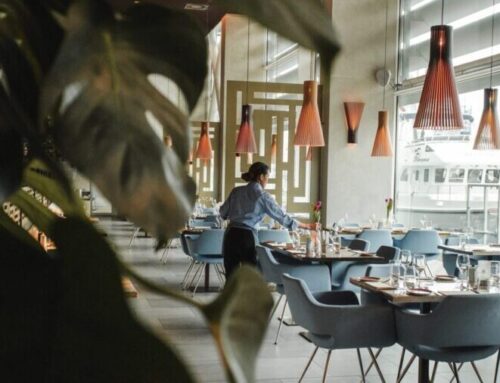What Happened to Neighborhoods?
When we meet with new buyers to help them uncover what is most important in their next home, they often provide a list of features, and then end with something along the lines of, “…and in a nice neighborhood.” There’s a pause as no one in the conversation knows quite how to define or *find* a “nice neighborhood.” And I suspect the pause is a moment of silence for the neighborhoods we once knew. Those intimate micro-communities that we still covet, and that are in increasingly short supply.
What happened to neighborhoods? If you’re old enough (or lucky enough) you can think of a time as a kid when you waited impatiently for the invitation that followed the ring of the doorbell, “Wanna play?” With two words and you were out the door, and out for the day. You remember when needing one more egg didn’t create a knot in your stomach as you deliberated between knocking on the door of your neighbor or driving 10 minutes to the store. You remember not being terrified that you left the garage door open, because one of the neighbors would catch the oversight.
There are two primary factors contributing to the loss of the quintessential neighborhood. The first is changes in architecture, and the second is changes in archetype.
Changes in Architecture
Pre-War architecture “houses were small, there was no air-conditioning, and TV had not yet penetrated. So, when the weather was warm, social life was conducted on the front stoops, in the alley, and with children running from house to house all day,” 1 says David Brooks in his book, The Second Mountain. Porches used to act as a cool outdoor living space. The front porch “[…] fused a connection between homeowners to their neighbors and those passing by on the street,” states New York Times article, The Rise and Fall of the Front Porch. “A young homeowner was enveloped in a series of communal activities that…only the most determined loner could escape.” 2 quotes Brooks.
Enter the automobile. The fumes and the noise on the street move porches to the side of the house before they disappear altogether. Garages become standard issue in post-war homes. Air conditioning makes being indoors more comfortable and television gives us something to do while we’re inside.
Changes in Archetype
“The ethos [of the 1950s] nurtured…rich, community life,” says Brooks. The moral ecology “[…] emphasized humility, reticence, and self-effacement. The message was, you’re no better than anyone else, but nobody is better than you. It held that self-love – egotism, narcissism – is the root of much evil,” he continues. 3 “Of course this culture had its failings…[it] tolerated a lot of racism and anti-Semitism…There was a lot of commentary in those days about the soul-sucking perils of conformity…There was a sense that the group had crushed the individual, and that people, reduced to a number, had no sense of an authentic self.” 4
Enter the individual. The Port Huron Statement, written by the Students for a Democratic Society in 1962, summarized of the moral ecology to come. “The goal of man and society should be human independence…a concern not with image of popularity but with finding a meaning of life that is personally authentic…This kind of independence does not mean egoistic individualism – the object is not to have one’s way so much as it is to have a way that is one’s own.”
“If ‘We’re All in This Together’ was about the group, this new moral ecology was all about freedom, autonomy, authenticity. You might summarize it with the phrase ‘I’m Free to Be Myself’,” says Brooks.
The Port Huron statement and battle cry of the hippie didn’t call for isolation, but the loss of community came as a consequence to the rise of the individual.
Sixty years later, we are free to be ourselves and free to be lonely. We’ve lost interdependence and barely know our neighbors’ names. We deeply crave true community. Getting it back is simple. Greet your neighbors when they walk by, exchange names, and write theirs down so you remember them next time. Do the good things we used to do, like shovel the walk a little further or bring a pie to someone new in the neighborhood. Spend time outside; outdoors and outside of ourselves.
Notes
1. Brooks, David. The Second Mountain: The Quest for a Moral Life. (New York, Random House, 2019), 5.
2. Brooks, David. The Second Mountain: The Quest for a Moral Life. (New York, Random House, 2019), 5.
3. Brooks, David. The Second Mountain: The Quest for a Moral Life. (New York, Random House, 2019), 6.
4. Brooks, David. The Second Mountain: The Quest for a Moral Life. (New York, Random House, 2019), 7.



